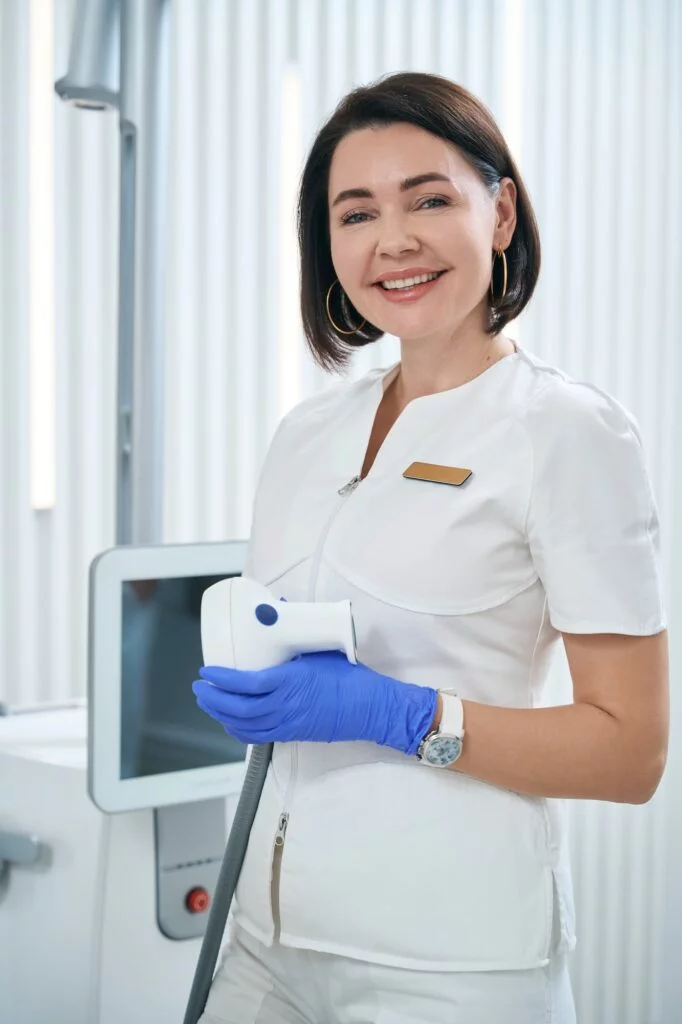Cancers can arise anywhere in the Gastrointestinal (GI) tract, they occur most often in the stomach (60% to 70%) and less commonly in the small intestine (20% to 30%). The rest are found in the esophagus, large intestine, rectum, and anus according to the American Cancer Society.
GASTROINTESTINAL CANCERS
There are over 225,000 new GI tumors diagnosed in the U.S. These would include cancers of the esophagus, stomach, colon/rectum, anus, and the pancreas. These tumors frequently require a multi-modality approach towards treatment including a combination of radiation therapy, surgery, and chemotherapy. Treatment times for radiation generally last 5-6 weeks and can be done either before or after surgery. Chemotherapy is often given with radiation therapy to enhance tumor cell sensitization. However, chemotherapy also adds risks by increasing the potential side effects and toxicity of treatment. It is therefore very important that our experience staff follow patients closely to prevent severe dehydration, anemia, or other side effects while undergoing treatment.
Radiation Therapy for Esophageal Cancer
There are several ways radiation therapy can be used to treat esophageal cancer. 3D conformal external beam radiation is a technique that utilizes three-dimensional imaging to more accurately target the lesion and to reduce the normal tissue damage. The second type is brachytherapy, which incorporates an active source within a catheter to allow the delivery of a high dose of radiation to a small volume of tissue. The main side effects of treatment are painful swallowing, fatigue, weight loss, and loss of appetite.
Radiation Therapy for Gastric Cancer
The radiation treatment typically lasts five weeks with chemotherapy given before, during, and after the radiation therapy. We can accurately target the stomach by using contrast agents as well as 3D conformal techniques. Improved targeting is very important in maximizing the dose to the stomach while limiting the toxicity to normal structures. Side effects can include fatigue, nausea, loss of appetite, and weight loss.
Radiation Therapy for Pancreatic Cancer
The pancreas is located deep in the abdomen and surrounded by many organs including the kidneys, small bowel, liver, stomach, spleen, and spinal cord. Due to these intimate relationships with other organs, treatment planning/targeting for pancreatic cancer is very important way to reduce potential side effects. We therefore employ 3D conformal radiation to accomplish this task.
A new planning and delivering technique called Intensity Modulated Radiation Therapy or IMRT is being used to treat various cancers including pancreatic cancer. By using computer-generated images, we are able to plan and deliver a very exquisitely shaped beam that hugs the cancerous tissue with a tighter margin while sparing the normal cells to a much higher degree. This precise technique allows us to increase the cancer-killing dose while simultaneously decreasing the side effects of the treatment.
Radiation Therapy for Rectal Cancer
A number of trials have demonstrated the local regional control and survival benefit in rectal cancer with the addition of radiation therapy and chemotherapy after surgery. Various techniques are used in our office to reduce toxicity including positioning, contrast, and multiple field arrangements. The radiation therapy lasts approximately 5-6.5 weeks with chemotherapy. Side effects may include skin irritation, diarrhea, fatigue, and low blood counts.
Radiation Therapy for Anal Cancer
The treatment of anal cancer has been a true success story. With modern radiation techniques and the addition of chemotherapy, we are able to prevent the vast majority of colostomies without sacrificing cure rates. Radiation is given over a course 4-6 weeks with concurrent chemotherapy. Surgery is reserved for salvage treatment only. The typical side effects include skin irritation, diarrhea, fatigue, and low blood counts.



